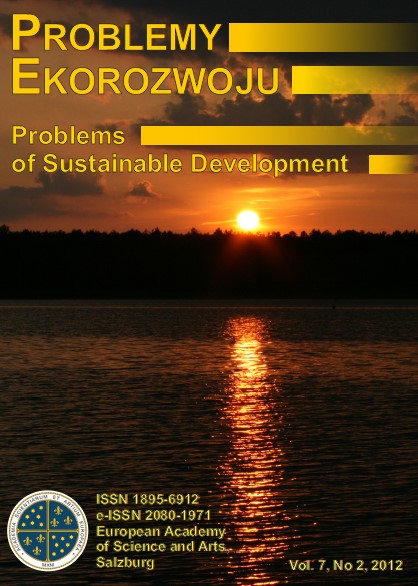Revealing the Level of Tension Between Cultural Heritage and Development in World Heritage Cities
Main Article Content
Authors
Abstract
In theory, cultural heritage is regarded as a useful catalyst for sustainable development. However, in reality it is also regarded as an obstacle. Although cultural heritage is widely recognized as a unique and valuable resource of economic development, local governments often favor development over the protection of cultural heritage. World Heritage cities (i.e. all urban settlements with properties inscribed on the World Heritage List, located in or at the outskirts of their urban areas) contain cultural heritage that is not only of local importance, but is also of outstanding universal value (OUV) – that is, of global importance. Such heritage can enrich cultural diversity of urban settlements, but can also provide a source of tension for the comprehensive management of varied urban landscapes. Three international organizations have been found periodically and systematically inventorying endangered cultural heritage properties throughout the world: UNESCO with the List of World Heritage in Danger, ICOMOS with Heritage at Risk, and the World Monuments Fund with the World Monuments Watch. Properties identified by these organizations are considered to be at risk as a result of varied threats, including development. However, the processes and criteria used by these organizations to determine such dangers were found to be very distinctive and inconsistent. The goal of this paper is to propose systematic and comprehensive criteria with which to categorize the endangered level of World Heritage cities – specifically those threatened by development – and to present the resultant ranking of these cities by such criteria. All official documents publishing the decisions adopted during the Sessions of the WH Committee, from 1977 to 2009, shall be used as a data source. This quantitative analysis will help evidence the evolution of World Heritage cities threatened by development, as well as the related trends of threats, causes and impacts. Initial analysis of the data has shown that many more WH cities (as defined above) have been endangered than have been represented on the List of World Heritage in Danger. While only 21 of the 476 WH properties including or included in WH cities have been included on the List in Danger, 193 have been discussed as endangered (to varying degrees) during WH Committee Sessions. Most frequently, the threats discussed had the potential to – but did not yet – cause irreversible damage to the OUV. However, many of the threats did cause damage to the OUV, though not to the extent necessary to warrant inclusion on the List in Danger. The primary threats mentioned in Committee Sessions have been new development (mostly commercial and residential) and infrastructure construction (such as roads, airports, ports and sewage systems). The primary causes of these threats have been insufficient implementation of regulatory frameworks (such as management plans, zoning laws and conservation plans), insufficient buffer zones, and insufficient coordination of stakeholders. While other threats, such as looting, flawed restoration work and general neglect have been mentioned; new development and construction are by far the most cited threats to OUV. This initial analysis illustrates the alarming tensions between heritage preservation, modernization and growth in WH cities throughout the world. This data is only the tip of the iceberg. Based mainly on official documents from World Heritage Committee Meeting Sessions, the data reflects only those cities and threats that capture the attention of the Committee. There are likely many more WH cities endangered than the Committee has the time to consider during its annual Sessions. Furthermore, the lack of specific references to development-related threats in all cities does not mean that they do not exist. Just as the operational guidelines have evolved, it is expected that the detail of information concerning threats, causes and impacts, will also increase in time. This research is considered to be a step forward in understanding development as a danger to World Heritage cities, including its threats, causes and impact. Moreover, as part of a broader international research entitled, Outstanding Universal Value, World Heritage Cities and Sustainability, the results will also help to determine best practices among the OUV assessment practices followed to protect World Heritage cities.



